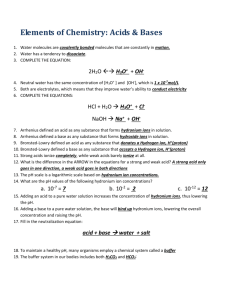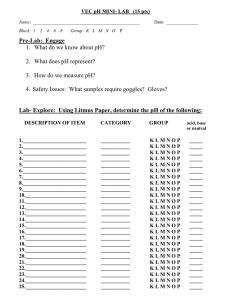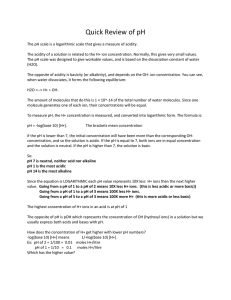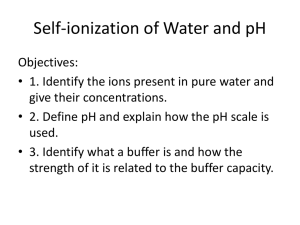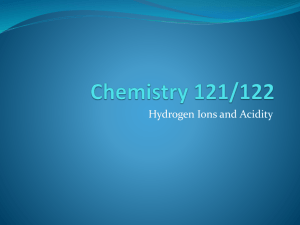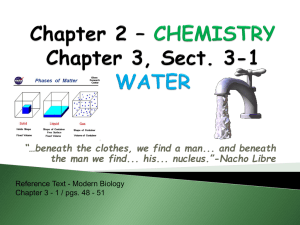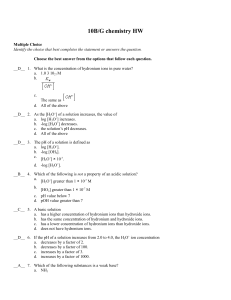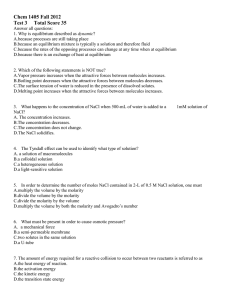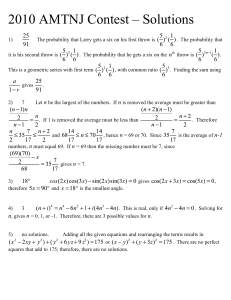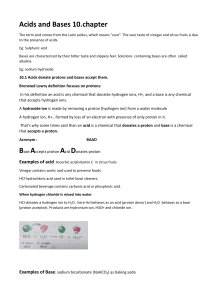Document
advertisement
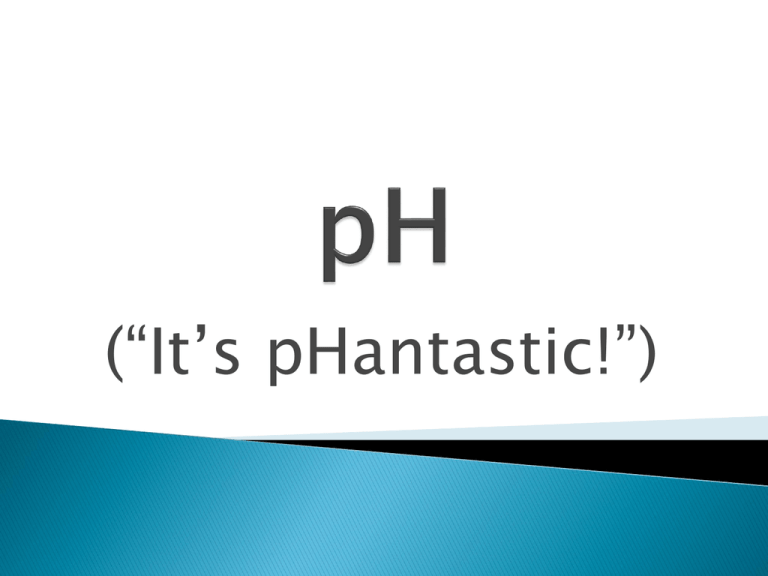
(“It’s pHantastic!”) pH measures __________________________________ The pH of water is _______________ Draw 2 water molecules and show the hydrogen bond. Draw a hydronium ion and show its formula. pH means the _____________ of hydrogen pH could also be the amount of ______________ or the amount of _________________ inside the water. The chance of finding a hydronium ion in distilled (pure) water is 1 in ___________________. ◦ Now, write that in decimal form: 0. Write the equation for pH: pH = What is the pH of an aqueous solution that has a concentration of 0.00001 hydronium ions? An acid found in your stomach is _______________. If we put that acid in water it ___________________ to form _______ions and _______________ ions. The concentration of hydronium ions for this acid is as high as 1 in ________. So, its pH is __________. An example of a base is ___________. When we put it into water it dissociates to form ________ions and _____________ions. ◦ What happens to the H+ ion concentration? Why? pH measures the amount of __________________ Draw a diagram that shows the pH scale from 0 to 14. Label it with three words: acid, base, neutral. The pH of the oceans over the past couple hundred years is (increasing or decreasing). Why is the pH changing? How is this related to mass extinctions in the past? Given [H+], take the –log of that [H+]. 1. Easy example: pH of a solution with [H+] = 1 x 10-8M pH = -log of the [H+] = -log (1 x 10-8) = -(-8) =8 2. More difficult example: pH of a solution with [H+] = 5.21 x 10-2M pH = -log of the [H+] = -log (5.21 x 10-2) = -(-1.283) = 1.283 pH + pOH = 14 When given pH, just subtract from 14 to get the pOH. Blood Distilled water Milk Stomach juice Ocean water Gasoline Ketchup Sweat Windex Saliva Drano Rainwater Orange juice Pool water Lye Lake water Example: Blood 7.35
